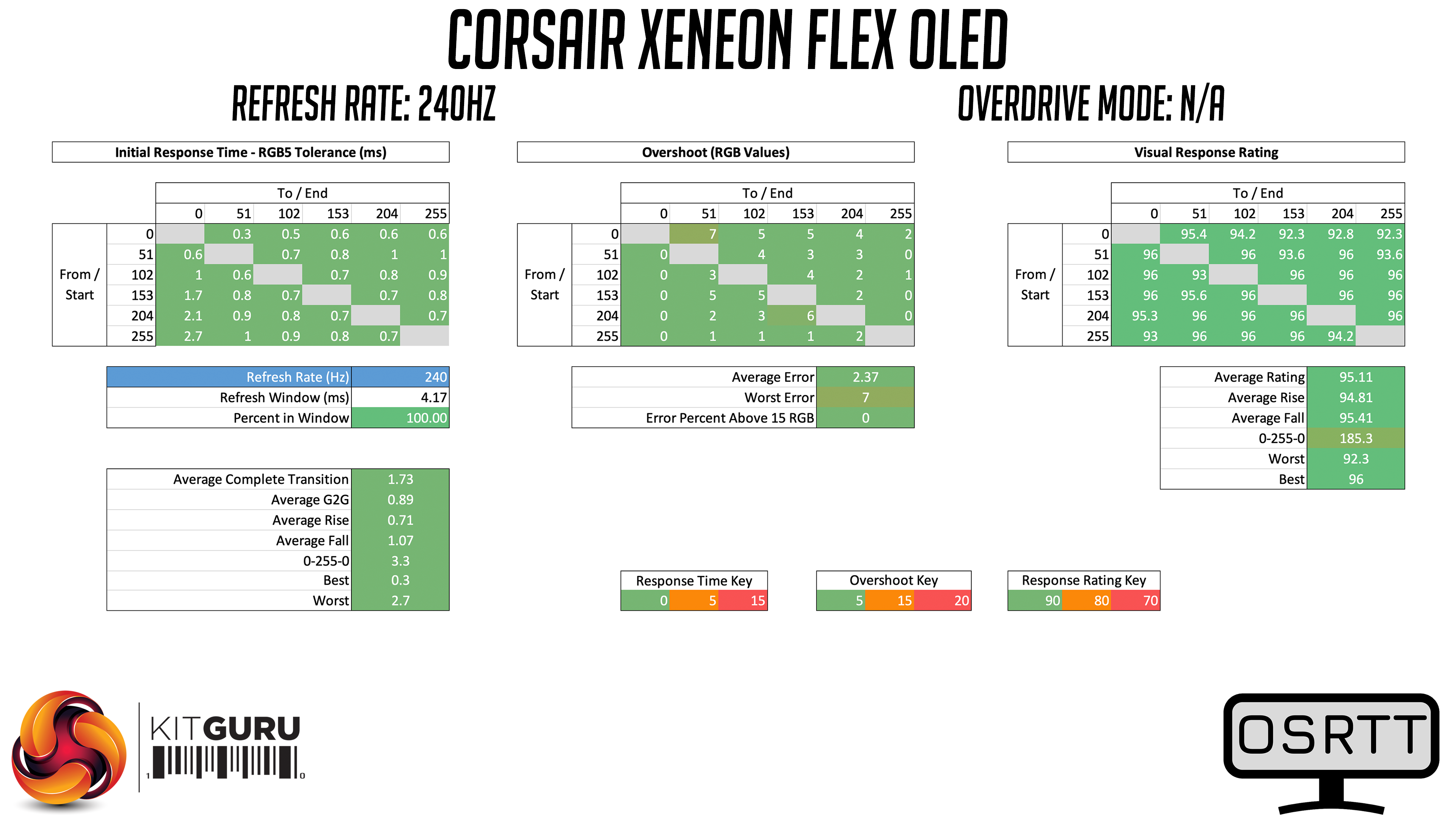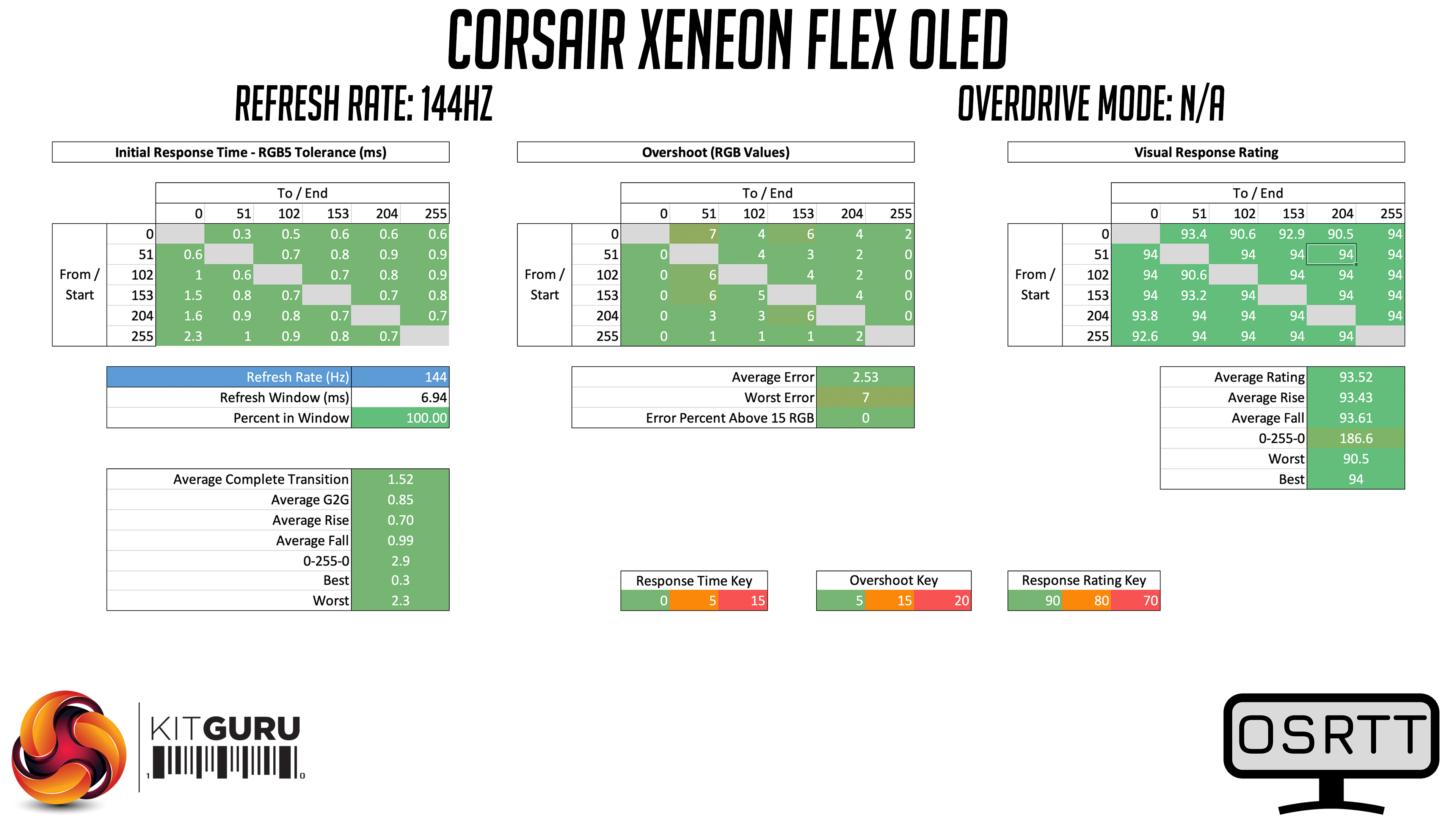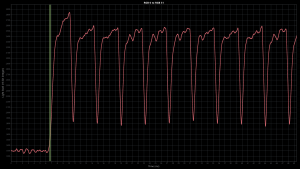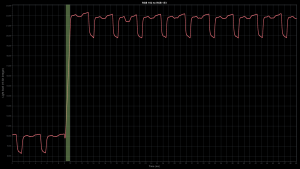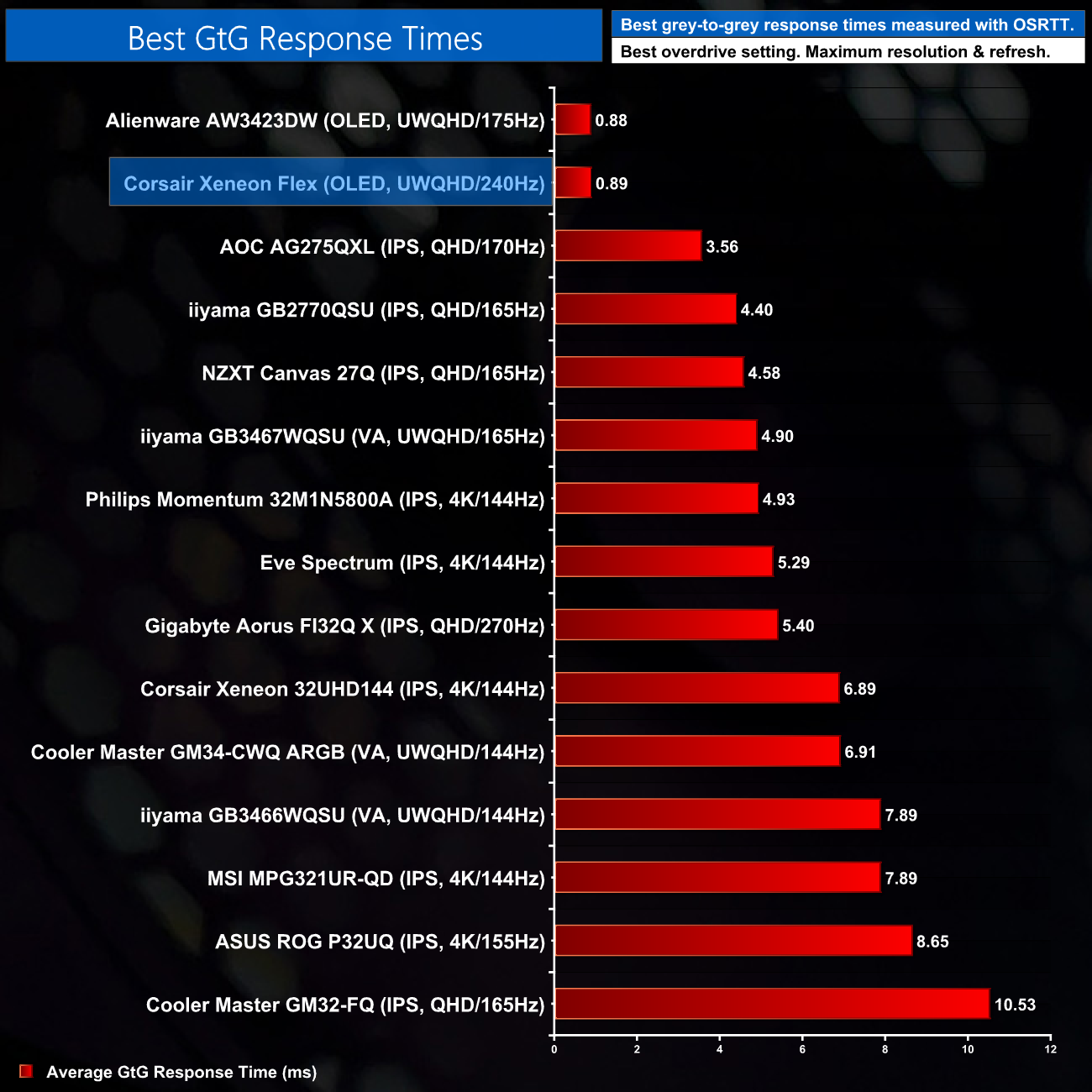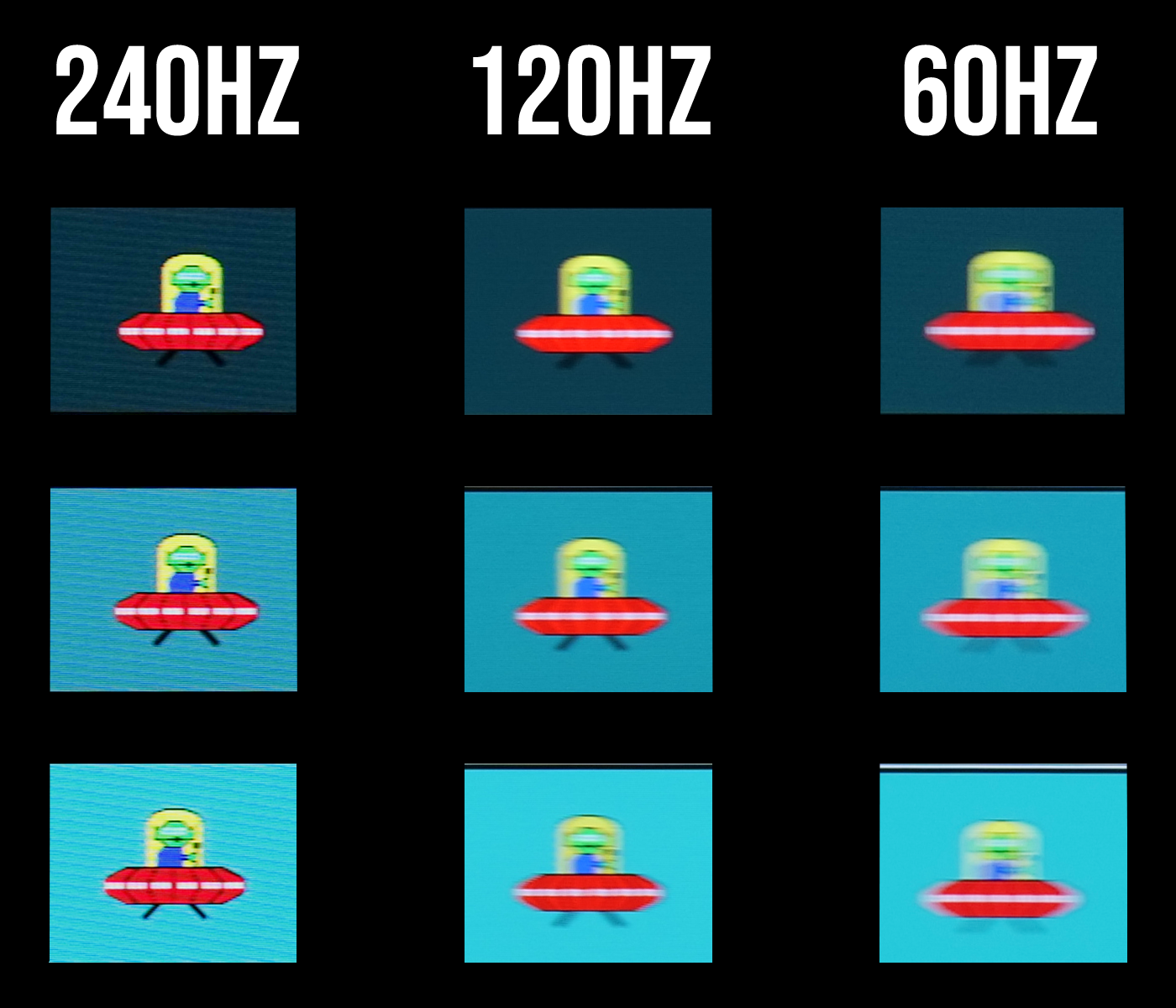Monitor response time testing is a new addition to our reviews, where we use the Open Source Response Time Tool (OSRTT), developed by TechTeamGB. This measures grey-to-grey response times and presents the results in a series of heatmaps, the style of which you may be familiar with from other reviews.
Initial Response Time is the time taken for the panel to transition from one colour to another, where lower values are better. We present the initial response time, so overshoot is not taken into account and is measured separately. We use a fixed RGB 5 tolerance for each transition.
Overshoot is the term given for when a monitor's transition exceeds or goes beyond its target value. So if a monitor was meant to transition from RGB 0 to RGB 55, but it hits RGB 60 before settling back down at RGB 55, that is overshoot. This is presented as RGB values in the heatmaps – i.e. how many RGB values past the intended target were measured.
Visual Response Rating is a metric designed to ‘score' a panel's visual performance, incorporating both response times and overdrive. Fast response times with little to no overshoot will score well, while slow response times or those with significant overshoot will score poorly.
We test the Flex at 240Hz, 144Hz and 60Hz. Being an OLED screen, there are no overdrive modes.
Monitor response times are excellent across the board, as we'd expect from an OLED screen. We observed sub-1ms average grey-to-grey response times over every refresh rate tested, easily making this one of the fastest monitors (soon to be) on the market.
You will notice some small levels of overshoot are reported in the charts above. To make it clear, this was not noticeable at all in practical use, but I did take a closer look at some of the data. The two line graphs above show two different transitions, in both cases the light level seems to fluctuate slightly for the duration of the refresh window. Again, this was not noticeable by eye, but it is something our OSRTT unit picked up, and I think is what caused some small amount of overshoot to be detected.
Still, the response times are top-class, putting the Xeneon Flex level with the Alienware AW3423DW which we reviewed earlier this year.
The above pursuit camera images, using the Blur Busters UFO test, shows the benefit of an increased refresh rate in terms of motion clarity. While the response times are sub-1ms on average regardless of refresh rate, due to the ‘grab and hold' nature of OLED – which displays an image for the entire duration of the refresh window – you will notice more blur at lower refresh rates – something that's important to mention as adaptive sync gamers will therefore need a beefy rig to drive this monitor at higher frame rates.
At 240Hz though, where the refresh window lasts just 4.16ms (compared to 16.7ms at 60Hz) motion clarity is absolutely top notch. There's a noticeable improvement even over 120Hz, so those of you gaming on a 4K/120 OLED TV will definitely appreciate the higher refresh rate. The Xeneon Flex proved to be, without doubt, the most motion blur-free gaming experience I have ever had.
 KitGuru KitGuru.net – Tech News | Hardware News | Hardware Reviews | IOS | Mobile | Gaming | Graphics Cards
KitGuru KitGuru.net – Tech News | Hardware News | Hardware Reviews | IOS | Mobile | Gaming | Graphics Cards


